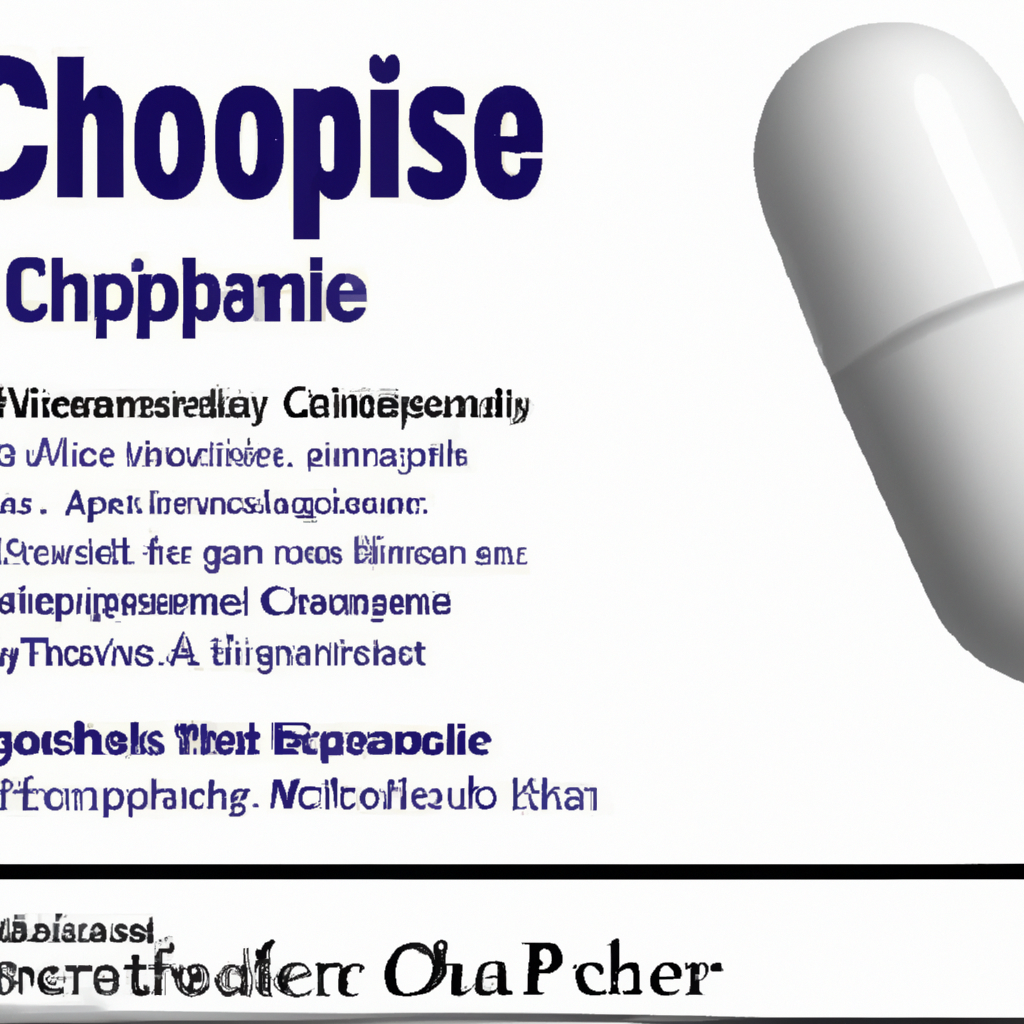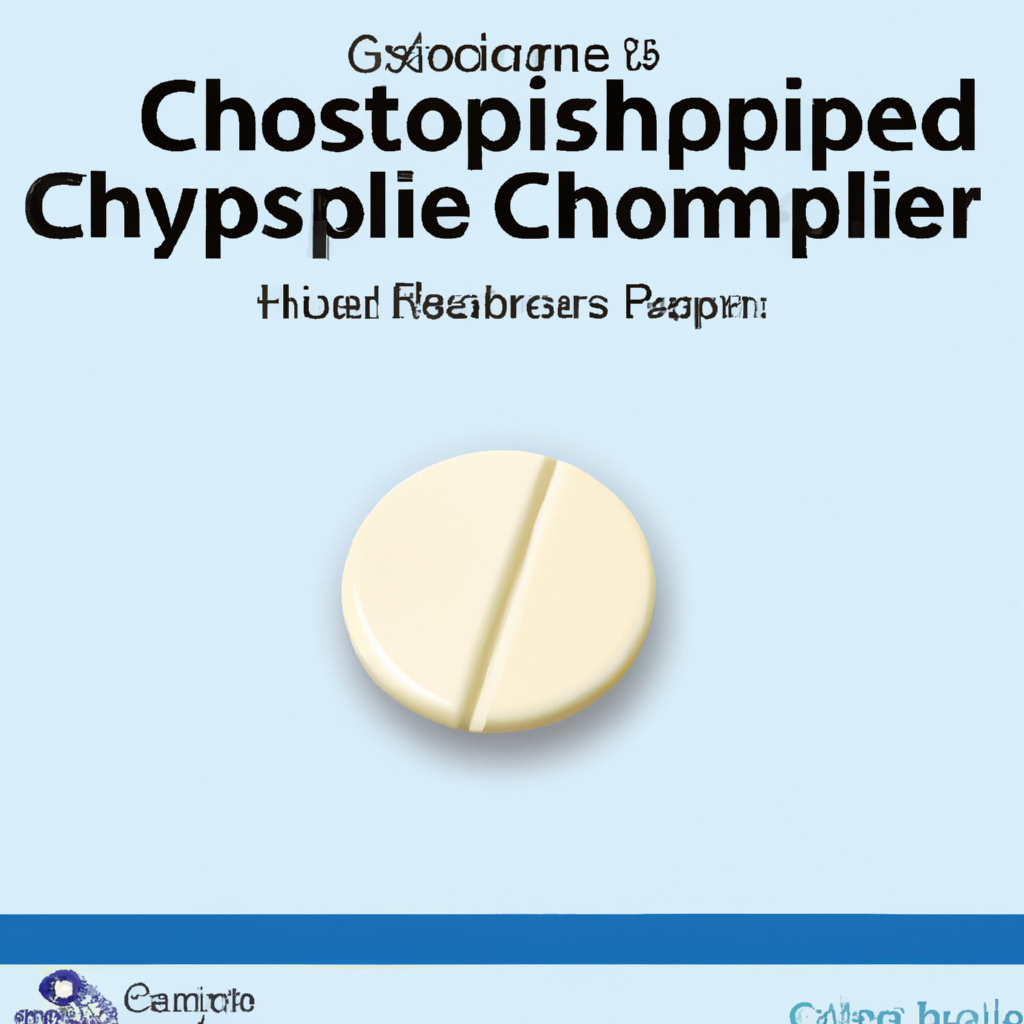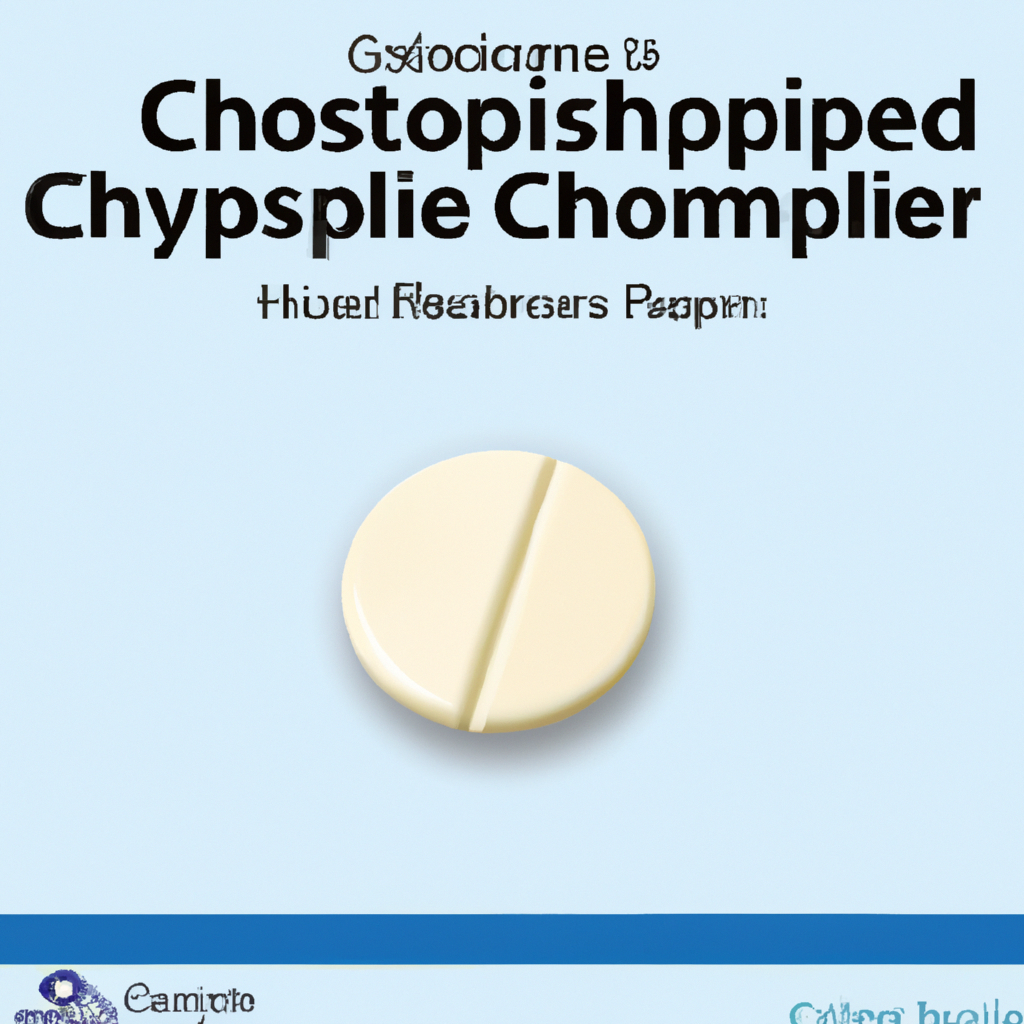In the realm of cancer treatment, there exists a powerful weapon known as cyclophosphamide. This remarkable drug has been making waves in the field of chemotherapy, playing a monumental role in combating various types of cancer. From its ability to suppress the immune system and inhibit the growth of cancer cells, to its versatility in combination therapies, cyclophosphamide has become an indispensable asset in the fight against this debilitating disease. Join us as we explore the incredible role of cyclophosphamide in cancer chemotherapy and the impact it has on patients’ lives.

Overview of Cancer Chemotherapy
Definition of cancer chemotherapy
Cancer chemotherapy refers to the use of drugs to treat cancer by targeting and killing cancer cells. It is a systemic treatment that can be administered orally or intravenously, allowing it to reach cancer cells throughout the body.
Goals of cancer chemotherapy
The primary goals of cancer chemotherapy are to cure cancer, control its growth and spread, alleviate symptoms, and prolong survival. Chemotherapy can be used as the primary treatment for certain types of cancer or in combination with other treatment modalities, such as surgery and radiation therapy.
Types of cancer chemotherapy agents
There are various types of chemotherapy agents used in cancer treatment, including cytotoxic drugs, targeted therapies, and immunotherapies. Cytotoxic drugs, such as cyclophosphamide, work by directly killing cancer cells. Targeted therapies focus on specific molecular targets associated with cancer cells, while immunotherapies stimulate the body’s immune system to recognize and destroy cancer cells.
Importance of cyclophosphamide in cancer chemotherapy
Cyclophosphamide is a widely used cytotoxic drug in cancer chemotherapy. It belongs to the class of alkylating agents and is particularly important due to its broad spectrum of activity against different types of cancers. Its mechanism of action and various indications make it a crucial component in many treatment regimens.
Mechanism of Action of Cyclophosphamide
Conversion of cyclophosphamide to active metabolites
Cyclophosphamide is a prodrug, which means it requires activation within the body to exert its anticancer effects. When administered, it is metabolized in the liver by a group of enzymes called cytochrome P450. This metabolizes cyclophosphamide into its active form, phosphoramide mustard, which plays a critical role in its mechanism of action.
DNA cross-linking and alkylating properties
The active form of cyclophosphamide, phosphoramide mustard, exerts its cytotoxic effects by forming covalent cross-links with DNA strands. These cross-links disrupt the DNA structure and prevent cancer cells from replicating and dividing. Additionally, cyclophosphamide acts as an alkylating agent, attaching alkyl groups to DNA strands and causing further damage to cancer cells.
Effects on cell cycle and cell death
Cyclophosphamide disrupts the cell cycle of cancer cells, leading to cell death. It primarily affects cells that are actively dividing, targeting rapidly dividing cancer cells. The drug’s cytotoxic effects induce apoptosis, programmed cell death, in cancer cells, preventing their uncontrolled growth.
Immunomodulatory effects
Apart from its direct cytotoxic effects, cyclophosphamide also has immunomodulatory properties. It can suppress the immune system to some extent, which is beneficial in certain situations. This immunosuppressive effect is utilized in the treatment of autoimmune diseases, where an overactive immune system can cause damage to healthy tissues.
Indications for Cyclophosphamide in Cancer Chemotherapy
Hematologic malignancies
Cyclophosphamide is commonly used in the treatment of various hematologic malignancies, including leukemia, lymphoma, and multiple myeloma. It can be administered as part of combination chemotherapy regimens or as a single agent. Its effectiveness against these cancers stems from its ability to target rapidly dividing cells in the bone marrow and lymphatic system.
Solid tumors
Cyclophosphamide is also used in the treatment of solid tumors such as breast cancer, ovarian cancer, lung cancer, and bladder cancer. It is often combined with other chemotherapy agents to increase its efficacy. In the case of breast cancer, for example, cyclophosphamide is often part of the adjuvant chemotherapy regimen following surgical removal of the tumor.
Autoimmune diseases
Cyclophosphamide’s immunosuppressive properties make it a valuable treatment option for autoimmune diseases, including systemic lupus erythematosus, rheumatoid arthritis, and vasculitis. By suppressing the hyperactive immune response, cyclophosphamide can reduce inflammation and prevent further damage to affected tissues.
Combination Therapies with Cyclophosphamide
Cyclophosphamide in combination with other chemotherapy agents
Cyclophosphamide is frequently used in combination with other chemotherapy agents to maximize its effectiveness in treating cancer. This approach, known as combination chemotherapy, allows for targeting cancer cells through multiple pathways and mechanisms of action. Different combinations are tailored to specific types of cancer and individual patient characteristics.
Cyclophosphamide in combination with targeted therapies
In recent years, targeted therapies that specifically inhibit certain molecules involved in cancer cell growth and survival have emerged as a promising treatment modality. Cyclophosphamide can be combined with targeted therapies to enhance their efficacy or to overcome resistance to these targeted agents. Such combinations can lead to synergistic effects, further improving treatment outcomes.
Neoadjuvant and adjuvant use of cyclophosphamide
Cyclophosphamide is often used in the neoadjuvant and adjuvant settings. Neoadjuvant chemotherapy is administered before surgery to shrink tumors and increase the likelihood of successful surgical removal. Adjuvant chemotherapy, on the other hand, is given after surgery to eliminate any remaining cancer cells and reduce the risk of recurrence. Cyclophosphamide is frequently included in these treatment regimens due to its efficacy and tolerability.

Dosing and Administration of Cyclophosphamide
Oral versus intravenous administration
Cyclophosphamide can be administered orally or intravenously, depending on the type of cancer and treatment plan. Oral administration offers convenience, allowing patients to take medication at home, while intravenous administration allows for precise dosing and monitoring by healthcare professionals. The choice between oral and intravenous administration depends on factors such as cancer type, stage, and patient’s overall health.
Optimal dosing strategies
The optimal dosing of cyclophosphamide varies depending on the specific indication and patient characteristics. It is usually determined by the patient’s body surface area or weight. The dose and duration of treatment may be adjusted based on the response to therapy, tolerability, and potential side effects. Close monitoring by healthcare professionals is essential to ensure the appropriate dosing strategy is followed.
Considerations for dose adjustments
Certain factors, such as impaired kidney or liver function, age, and concurrent medications, can affect the metabolism and elimination of cyclophosphamide. Adjustments may be necessary to avoid toxicity or to optimize the drug’s efficacy. Regular monitoring of blood counts and comprehensive evaluations of patients’ overall health are crucial in determining the need for dose adjustments.
Adverse Effects of Cyclophosphamide
Hematological toxicities
Cyclophosphamide can have adverse effects on the blood, leading to myelosuppression. This can manifest as a decrease in red blood cells (anemia), white blood cells (neutropenia), and platelets (thrombocytopenia). Myelosuppression can increase the risk of infections, anemia-related fatigue, and bleeding tendencies. Regular monitoring of blood counts is necessary to detect and manage these toxicities promptly.
Gastrointestinal toxicities
Cyclophosphamide can cause various gastrointestinal side effects, such as nausea, vomiting, diarrhea, and mouth sores. These side effects can significantly impact patients’ quality of life and may require supportive medications, dietary modifications, and hydration strategies to manage symptoms effectively.
Genitourinary toxicities
Cyclophosphamide can also cause bladder toxicity, commonly presenting as hemorrhagic cystitis. This condition can lead to bladder irritation, pain, and blood in the urine. Adequate hydration, frequent urination, and the use of a medication called mesna can help prevent and manage hemorrhagic cystitis associated with cyclophosphamide use.
Immunosuppression and infection risk
As an immunosuppressive agent, cyclophosphamide can weaken the immune system, increasing the risk of infections. Patients receiving cyclophosphamide should be vigilant about practicing good hygiene, avoiding close contact with sick individuals, and promptly reporting any signs or symptoms of infection to their healthcare providers.
Long-term complications
Cyclophosphamide treatment may be associated with long-term complications, such as infertility, hormonal disturbances, and an increased risk of developing other types of cancer. Fertility preservation options and regular monitoring for late-onset complications are vital considerations for patients receiving cyclophosphamide.
Monitoring and Management of Cyclophosphamide Side Effects
Regular blood count monitoring
Regular blood count monitoring is essential to detect and manage myelosuppression associated with cyclophosphamide. Providers can closely monitor changes in red blood cell, white blood cell, and platelet counts, enabling early intervention if needed. Adjustments to the dose or treatment schedule may be required to minimize the risk of severe complications.
Prevention and management of hemorrhagic cystitis
To prevent hemorrhagic cystitis, which can occur with cyclophosphamide treatment, hydration strategies, such as increasing fluid intake and frequent urination, are crucial. Mesna, a medication that binds to a toxic metabolite of cyclophosphamide, can be administered to reduce the risk of bladder toxicity.
Strategies to minimize gastrointestinal toxicity
To minimize gastrointestinal side effects, antiemetic medications can be prescribed before cyclophosphamide administration. Patients may be advised to eat small, frequent meals, avoid spicy or greasy foods, and maintain good oral hygiene to prevent mouth sores. If diarrhea occurs, over-the-counter or prescription medications may provide relief.
Supportive care measures for myelosuppression
To manage myelosuppression associated with cyclophosphamide, supportive care measures include growth factors, such as erythropoietin and granulocyte colony-stimulating factor (G-CSF), to stimulate red blood cell and white blood cell production, respectively. Blood transfusions and platelet transfusions may also be necessary, depending on the severity of myelosuppression.
Drug Interactions and Contraindications
Potential interactions with other medications
Cyclophosphamide may interact with other medications, potentially altering their efficacy or increasing the risk of side effects. Patients should inform their healthcare providers about all medications, including over-the-counter drugs, herbal supplements, and vitamins, to minimize the risk of drug interactions and optimize treatment outcomes.
Contraindications to cyclophosphamide use
There are certain contraindications to the use of cyclophosphamide. These include hypersensitivity to cyclophosphamide or any of its components, severe bone marrow suppression, active infections, and existing bladder issues. Patients with these contraindications must be evaluated by their healthcare providers for alternative treatment options.
Future Directions and Research
Novel formulations and prodrugs
Ongoing research aims to develop novel formulations and prodrugs of cyclophosphamide that can enhance its delivery to cancer cells while reducing systemic toxicity. These advancements may improve treatment efficacy and reduce the risk of adverse effects.
Combination therapies and personalized medicine
The field of cancer research continues to explore combination therapies involving cyclophosphamide and other treatment modalities, such as targeted therapies and immunotherapies. Personalized medicine, which tailors treatments based on individual patient characteristics and tumor molecular profiles, holds promise in optimizing cyclophosphamide’s effectiveness.
Development of targeted cyclophosphamide delivery systems
Researchers are also working on developing targeted delivery systems for cyclophosphamide. These systems aim to specifically deliver the drug to cancer cells while sparing healthy tissues, thereby maximizing efficacy and minimizing toxicity.
Conclusion
Cyclophosphamide plays a crucial role in cancer chemotherapy due to its broad spectrum of activity against various types of cancers. Its mechanism of action, indications, and combination therapy potential make it a valuable component in treatment regimens for hematologic malignancies, solid tumors, and autoimmune diseases. Understanding the dosing, monitoring, and management of cyclophosphamide’s side effects is essential to optimize treatment outcomes and ensure patient safety. Ongoing research and advancements in drug delivery systems and personalized medicine offer hope for further improving cyclophosphamide’s effectiveness in the future.






